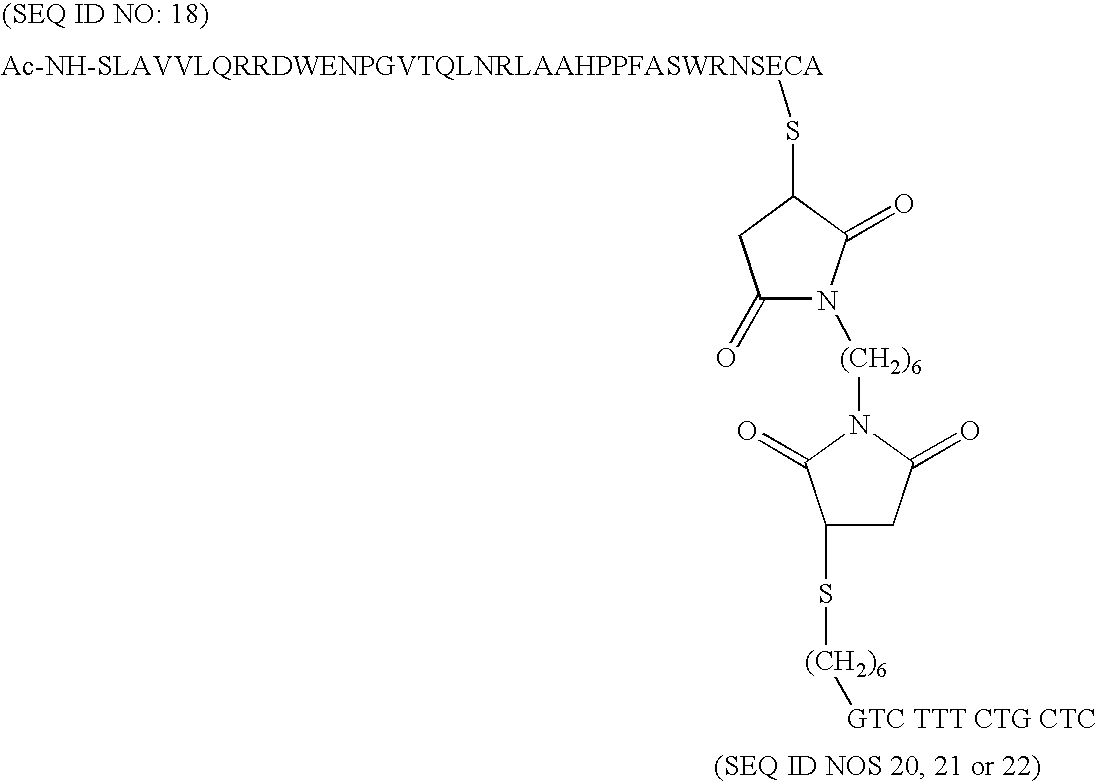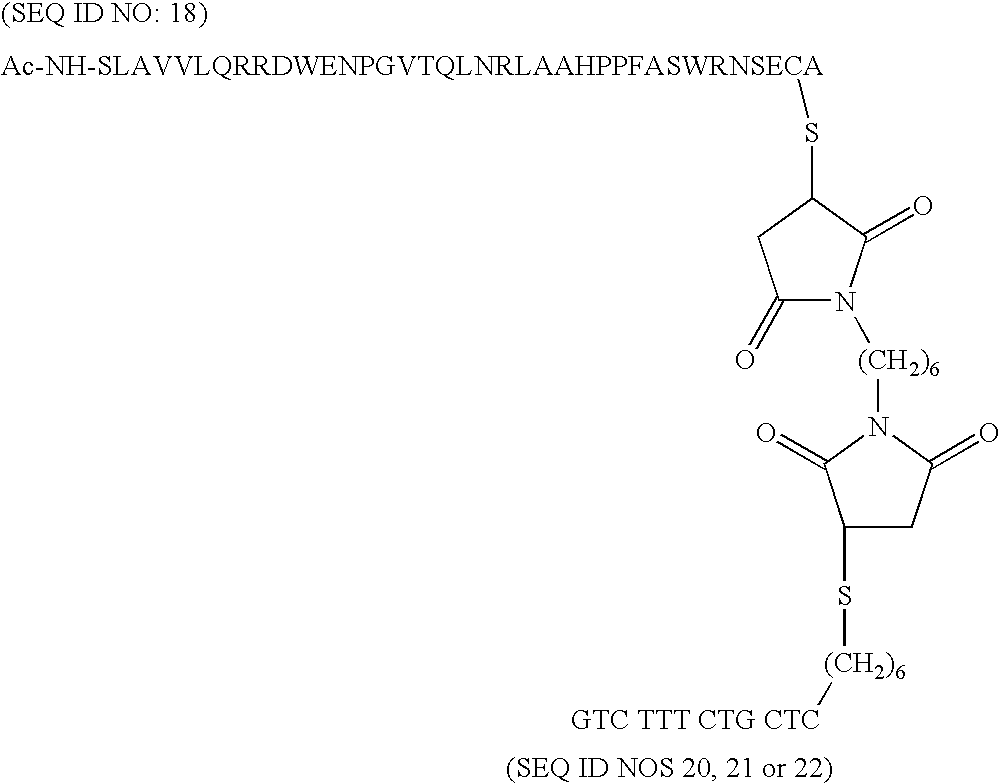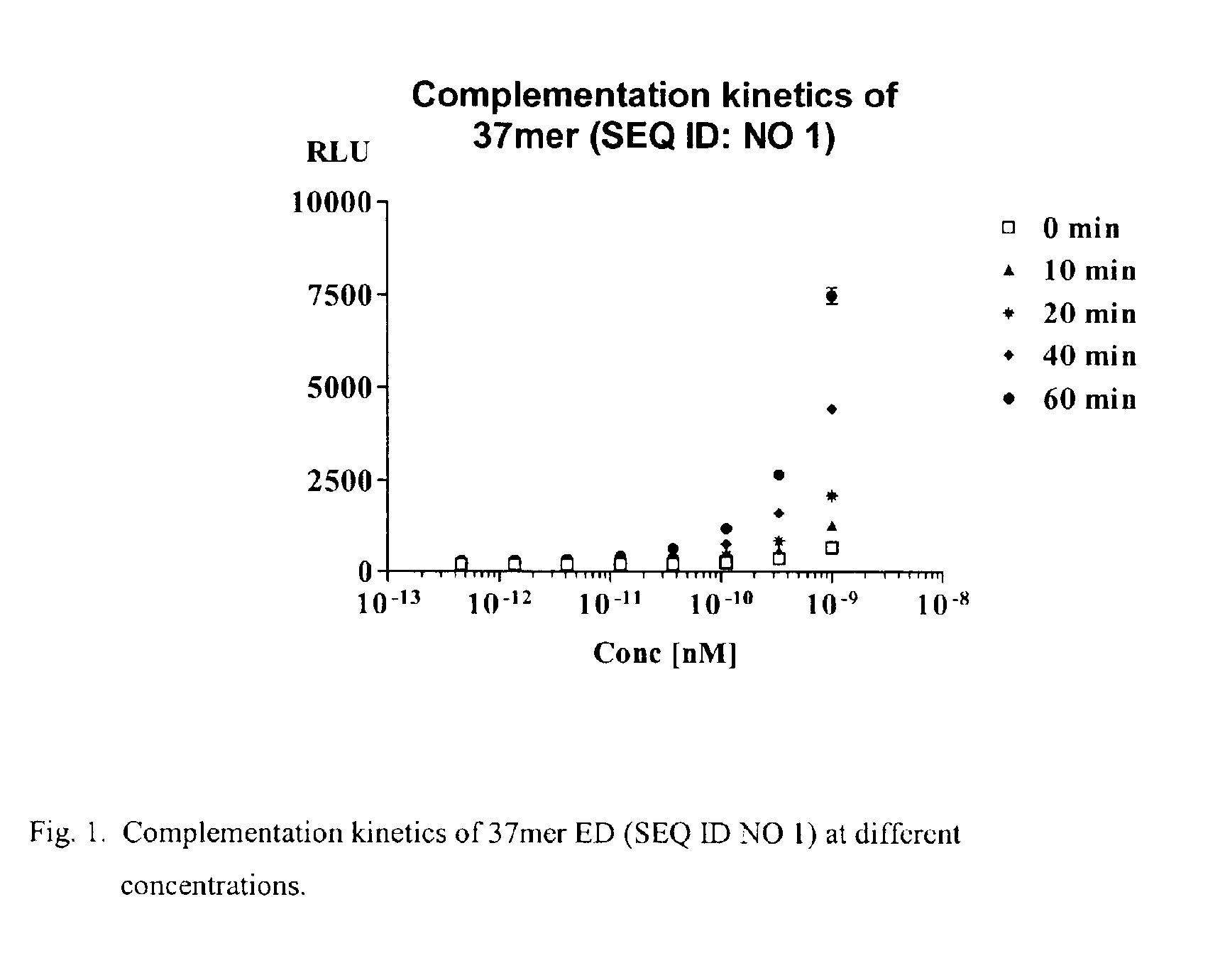Short enzyme donor fragment
a donor and enzyme technology, applied in the field of galactosidase fragments, can solve the problems of tedious purification of products, high cost, and high labor intensity, and achieve the effect of rapid degradation
- Summary
- Abstract
- Description
- Claims
- Application Information
AI Technical Summary
Benefits of technology
Problems solved by technology
Method used
Image
Examples
Embodiment Construction
[0020]Novel oligopeptides are provided that serve as the enzyme donor fragment of a complex with the enzyme acceptor fragment of β-galactosidase. The oligopeptides are of not more than 40 amino acids of the β-galactosidase enzyme donor fragment and provide for improved properties and preparation due to their reduced size. The active sequence has substantially the natural sequence of the N-terminal proximal sequence of β-galactosidase, for the most part having the following amino acid sequence:
[0021]SLAVVLQRRDWENPGVTQLNRLAAHPPFASWRNSEEA (SEQ ID NO: 1),
[0022]and not more than a total of an additional 3 amino acids present at the termini, particularly of the natural β-galactosidase, and not more than 3 substitutions within the sequence, as the active ED by itself. For the most part, conservative substitutions are involved, where the non-polar aliphatic amino acids, such as G, A, V, L, and I may be substituted one for the other, the non-charged polar amino acids, such as C, M, S, T, N, ...
PUM
| Property | Measurement | Unit |
|---|---|---|
| time | aaaaa | aaaaa |
| emission wavelength | aaaaa | aaaaa |
| pH | aaaaa | aaaaa |
Abstract
Description
Claims
Application Information
 Login to View More
Login to View More - R&D
- Intellectual Property
- Life Sciences
- Materials
- Tech Scout
- Unparalleled Data Quality
- Higher Quality Content
- 60% Fewer Hallucinations
Browse by: Latest US Patents, China's latest patents, Technical Efficacy Thesaurus, Application Domain, Technology Topic, Popular Technical Reports.
© 2025 PatSnap. All rights reserved.Legal|Privacy policy|Modern Slavery Act Transparency Statement|Sitemap|About US| Contact US: help@patsnap.com



